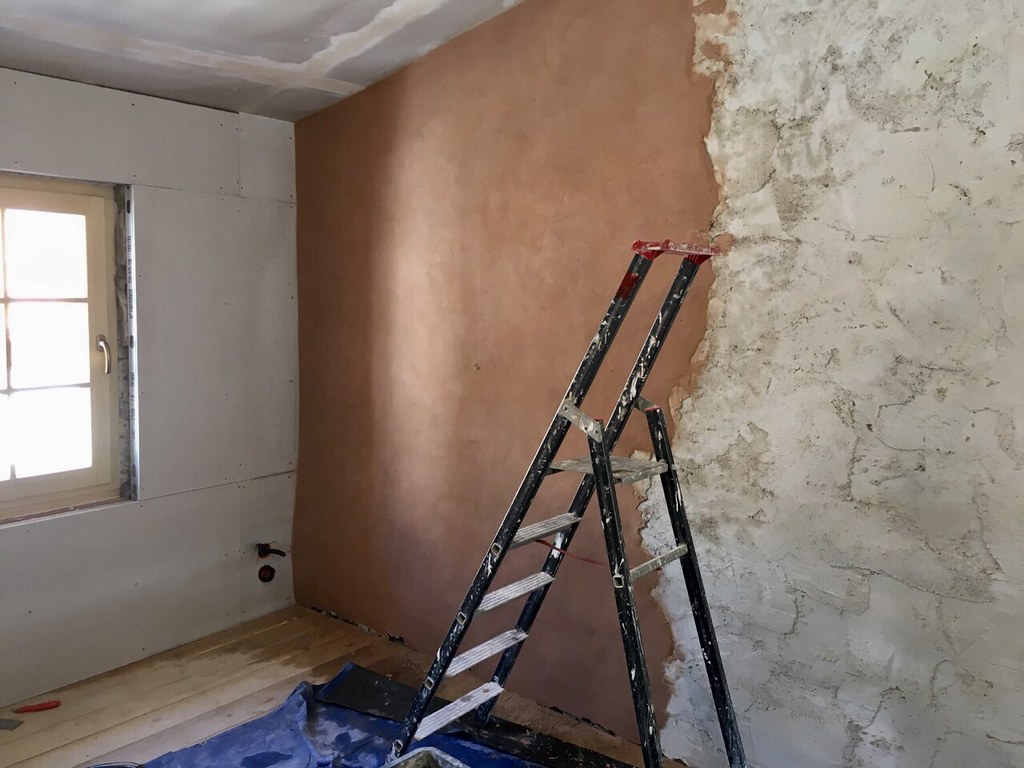Discover the crucial waiting times for plaster to dry before painting – get it wrong, and you could face costly redecorating nightmares.
Understanding Plaster Drying Times: The Basics
Proper plaster drying is fundamental to achieving a professional finish in any plastering project. The drying process involves complex chemical reactions and moisture evaporation that must be completed fully before applying paint. In the UK’s often damp climate, understanding these basics is crucial. A newly plastered wall typically contains around 2-3 litres of water per square metre, all of which needs to evaporate before painting can begin. This process can’t be rushed without risking significant damage to both the plaster and subsequent paint finish.
Different Types of Plaster and Their Drying Times
- Skim Coat Plaster: 3-7 days initial drying time
- Backing Plaster: 7-14 days minimum drying period
- Bonding Plaster: 10-14 days before painting
- One-Coat Plaster: 5-10 days depending on thickness
- Traditional Lime Plaster: Up to 4 weeks for complete curing
Factors Affecting Plaster Drying Time
Several environmental factors significantly impact drying times in British homes. Temperature plays a crucial role, with optimal drying occurring between 15-20°C. Humidity levels above 70% can significantly extend drying times, while proper ventilation accelerates the process. These factors are particularly relevant in the UK’s variable climate, where managing indoor conditions becomes essential for successful plastering projects.
The Complete Timeline: From Fresh Plaster to Paint-Ready
Understanding the complete timeline from application to painting readiness helps manage expectations and ensure optimal results. The process involves distinct phases, each requiring specific conditions and attention. Here’s what to expect during the crucial drying period.
Initial Drying Phase (Days 1-7)
- Day 1-2: Plaster appears dark and wet
- Day 3-4: Begins lightening from edges inward
- Day 5-6: Most areas appear lighter with some dark patches
- Day 7: Should show uniform pale colour if drying properly
Complete Curing Process (Up to 4 Weeks)
The full curing process extends beyond initial drying, particularly in UK conditions. Weeks 2-4 are crucial for moisture content reduction, with internal moisture levels dropping from about 30% to below 10%. During this time, the plaster continues to harden and develop its final strength.
How to Tell When Plaster is Ready for Painting
Determining the right moment to start painting requires careful observation and testing. The most reliable indicators combine visual assessment with physical testing methods, ensuring you don’t compromise your finishing work.
Visual Indicators of Dry Plaster
- Uniform pale or off-white colour throughout
- No visible dark patches or moisture marks
- Even surface texture without soft spots
- No cool areas when touching the surface
Professional Testing Methods
Professional plasterers employ several reliable testing methods to confirm drying completion. The moisture meter test should show readings below 10%, while the tap test should produce a solid, hollow sound. A simple moisture test using clear plastic sheet taped to the wall for 24 hours can reveal any remaining dampness.
Speeding Up the Drying Process Safely
While patience is crucial, there are safe methods to accelerate drying without compromising quality. The key is maintaining a balance between promoting evaporation and avoiding rapid moisture loss that could cause cracking.
Using Dehumidifiers and Heaters Correctly
- Position dehumidifiers centrally in the room
- Maintain room temperature between 15-20°C
- Use gentle heating – avoid direct heat on plaster
- Empty dehumidifiers regularly
- Monitor humidity levels aiming for 50-60%
Proper Ventilation Techniques
Good airflow is essential for efficient drying. Open windows when weather permits, use fans to circulate air, and ensure cross-ventilation where possible. Aim for 2-3 air changes per hour in the room without creating strong draughts that could cause uneven drying.
Common Mistakes and How to Avoid Them
Many DIY enthusiasts and even some professionals make costly mistakes during the plaster drying process. Understanding these common pitfalls can help you achieve better results and avoid expensive remedial work.
The Risks of Painting Too Soon
- Paint peeling and bubbling
- Uneven colour absorption
- Mould growth behind paint
- Surface efflorescence
- Compromised adhesion
Professional Tips for Perfect Results
Follow these expert recommendations for optimal results: maintain consistent room temperature, avoid opening windows during very humid weather, use mould-resistant primer once fully dry, and consider professional moisture testing for large projects.
Final Considerations and Next Steps
Once your plaster has thoroughly dried, proper preparation remains crucial for achieving an excellent finish. Consider the specific requirements of your project and environmental conditions when planning your next steps.
Choosing the Right Primer and Paint
- Use dedicated plaster primer or mist coat
- Select breathable paint for first coat
- Consider room usage when choosing finish
- Apply minimum of two top coats
When to Call a Professional
Professional intervention might be necessary if you notice uneven drying, cracking, or other issues. At Kent Plasterers, we provide expert advice and solutions for all plastering challenges across Tunbridge Wells and Kent. Contact us for professional assessment if you’re uncertain about your plaster’s readiness for painting or notice any concerning signs during the drying process.
FAQ
What happens if you paint straight on plaster?
If you paint straight onto new plaster without a mist coat, the plaster will soak up the majority of the paint and you’ll need to apply a lot more coats. The paint may also start to peel as it dries.
How to speed up plaster drying?
Room Temperature: A consistent temperature of 18–22°C is ideal for drying plaster. Humidity Levels: High humidity slows the process, while lower humidity speeds it up. Ventilation: Proper air circulation helps moisture escape from the plaster. Whether to keep windows open or closed depends on outdoor conditions.
What happens if you paint on slightly wet plaster?
You’re essentially trapping the moisture underneath the paint layer by painting the surface while the plaster is still damp. In the worst-case scenario, it could degrade the adhesion of the plaster and cause it to crumble away from the wall.
Can you paint straight onto old plaster?
Is it OK to paint straight onto plaster? As long as the plaster has fully dried, it’s safe to paint onto.
Sources
[1] https://www.screwfix.com/guides/building/how-long-does-plaster-take-to-dry
[2] https://lopcocontracting.com/how-long-should-plaster-cure-before-painting-it/
[3] https://wallpaperbuddy.com/guide/painting-on-new-plaster/

